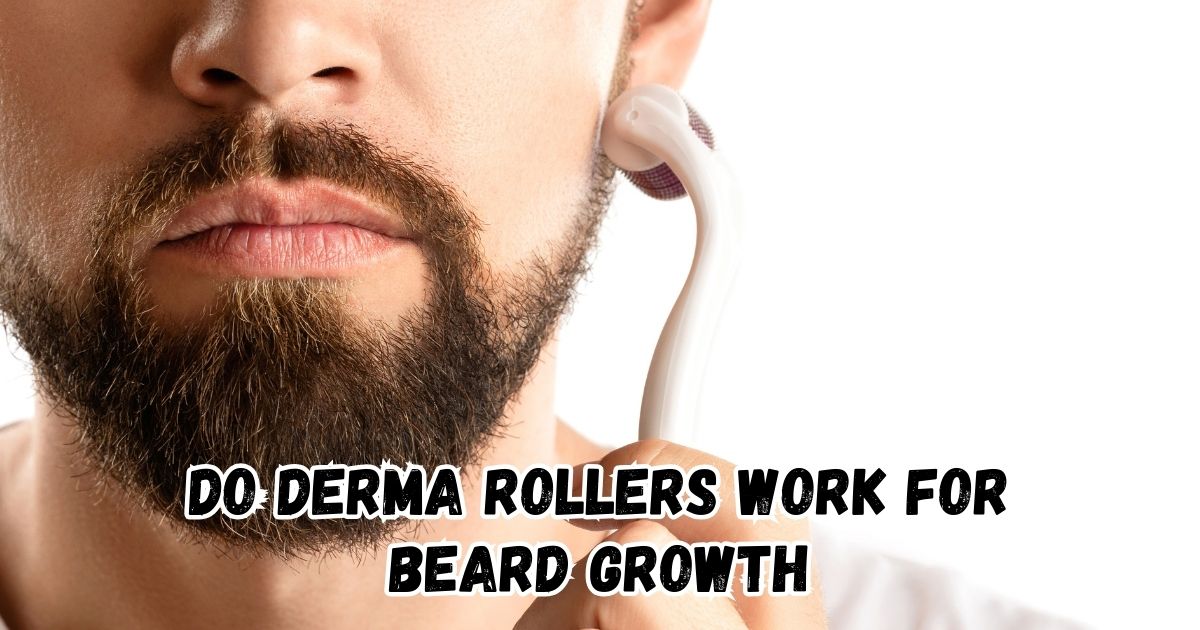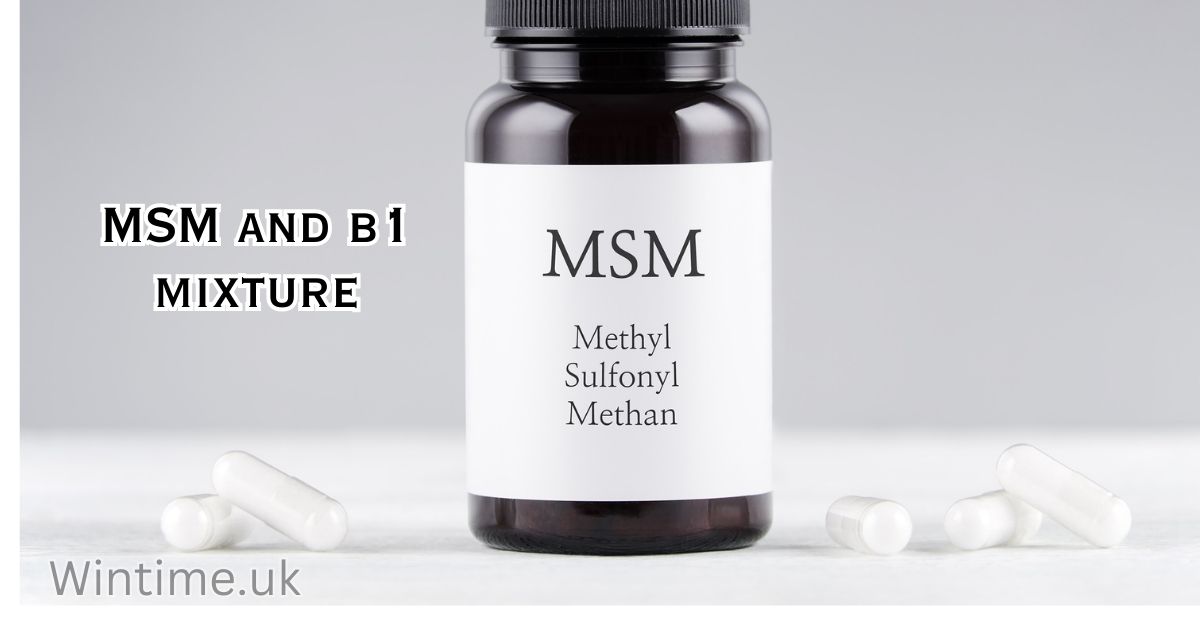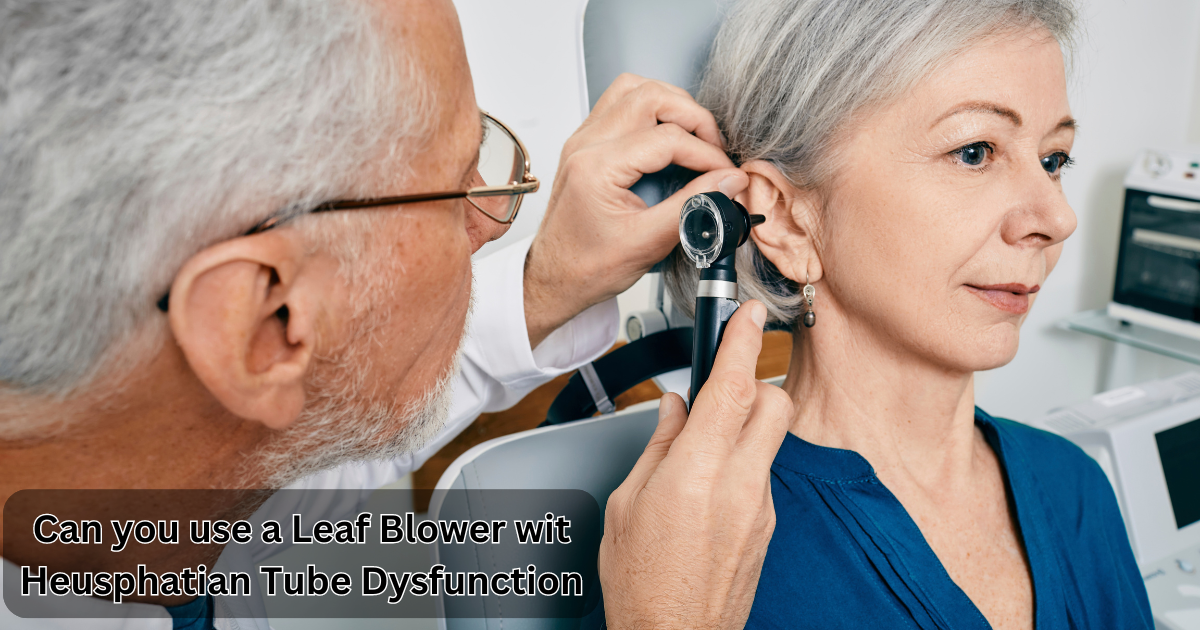Do Derma Rollers Work for Beard Growth? Derma rollers, also known as microneedling devices, have gained significant popularity in recent years as a skincare tool designed to stimulate collagen production and improve skin texture. These small, hand-held devices consist of a roller covered with fine needles that create microscopic punctures in the skin when rolled over its surface. This process, known as microneedling, is believed to promote healing and rejuvenation by triggering the skin’s natural repair mechanisms. Originally developed for treating acne scars and improving skin texture, derma rollers are now being explored for their potential benefits in enhancing beard growth. The question, “Do derma rollers work for beard growth?” is increasingly being asked as more individuals seek to leverage the benefits of microneedling to achieve a fuller and more robust bear
The concept of using derma rollers for beard growth is rooted in the idea that microneedling can boost the health of hair follicles and improve blood circulation in the facial area. By creating tiny wounds on the skin, derma rollers are thought to encourage the growth of new hair and increase the thickness of existing beard hair. This innovative approach has sparked considerable interest among men looking for effective solutions to achieve a fuller, denser beard.
Purpose of the Guide
This comprehensive guide aims to provide a detailed examination of whether derma rollers work for beard growth. We will delve into the science behind beard growth and how derma rollers function, comparing their effectiveness with other beard growth treatments. By exploring scientific studies, personal experiences, and expert opinions, this article will equip you with the knowledge needed to make an informed decision about incorporating derma rollers into your beard care routine. Whether you’re considering trying a derma roller or simply curious about its potential benefits, this guide will offer valuable insights and practical advice.
Understanding Beard Growth
The Science Behind Beard Growth
Beard growth is a complex process influenced by various factors, including genetics, hormones, and overall health. The foundation of beard growth lies in the hair follicle, a small organ embedded in the skin that produces hair. Hair follicles undergo a continuous cycle of growth, rest, and shedding. During the anagen phase, the active growth phase, hair follicles produce new hair cells and push the hair shaft through the skin’s surface. This phase can last for several years, determining the length and density of the beard.
Testosterone, a key hormone responsible for male characteristics, plays a crucial role in beard growth. Dihydrotestosterone (DHT), a derivative of testosterone, is particularly influential in stimulating facial hair follicles. Men with higher levels of DHT often experience more robust beard growth. Additionally, genetics determine the number and distribution of hair follicles on the face, influencing the overall appearance and density of the beard.
Common Challenges in Growing a Beard
Despite the natural process of beard growth, many men face challenges in achieving a full and even beard. Common issues include patchiness, slow growth, and thin hair. Genetics is a primary factor in these challenges; some individuals are genetically predisposed to have fewer hair follicles or weaker hair growth. Hormonal imbalances, such as low testosterone levels, can also affect beard growth, leading to slower or uneven development.
Environmental factors, such as poor nutrition, stress, and lack of sleep, can further impact beard growth. A diet lacking essential nutrients, such as vitamins and minerals, can weaken hair follicles and slow down growth. Stress and inadequate sleep disrupt hormonal balance, potentially leading to thinning or patchy beards. Addressing these challenges requires a holistic approach that combines proper skincare, a balanced diet, and stress management, alongside exploring treatments like derma rollers.
How Derma Rollers Work
What is a Derma Roller?
A derma roller is a skincare tool designed to enhance the appearance and health of the skin through a process known as microneedling. The device features a cylindrical drum covered with fine needles that create tiny punctures in the skin’s surface when rolled. These needles can vary in length, ranging from 0.2 mm to 2.5 mm, depending on the intended use and skin area being treated. Derma rollers are available in different sizes and configurations, each tailored to specific skin concerns and treatment goals.
The primary function of a derma roller is to stimulate the skin’s natural healing process by creating controlled micro-injuries. This process triggers the production of collagen and elastin, essential proteins that contribute to skin firmness and elasticity. Although derma rollers were initially developed for treating acne scars and improving skin texture, they are now being used for various applications, including enhancing beard growth. By promoting circulation and collagen production in the facial area, derma rollers are believed to support the health of hair follicles and encourage beard growth.
Mechanism of Action
The mechanism behind derma rollers involves inducing a controlled healing response through microneedling. When the needles of the derma roller penetrate the outer layer of the skin, they create micro-channels that stimulate the body’s natural repair mechanisms. This process triggers the release of growth factors and the production of collagen and elastin, essential for skin regeneration and strengthening.
In the context of beard growth, microneedling is thought to benefit hair follicles by improving blood circulation in the facial area. Enhanced blood flow delivers more nutrients and oxygen to the hair follicles, promoting healthier hair growth. Additionally, the increased production of collagen may help strengthen hair follicles and improve their ability to produce thicker, fuller beard hair. By combining these effects, derma rollers aim to create a more conducive environment for beard growth.
Derma Rollers and Beard Growth
Theoretical Benefits of Using Derma Rollers for Beards
The theoretical benefits of using derma rollers for beard growth are rooted in the principles of microneedling and its impact on skin health. One of the primary benefits is the improvement in blood circulation. By creating micro-injuries in the skin, derma rollers stimulate the vascular system, leading to increased blood flow to the facial area. This enhanced circulation delivers essential nutrients and oxygen to hair follicles, potentially promoting healthier and faster beard growth.
Another benefit is the stimulation of collagen production. Collagen is a vital protein that contributes to the strength and elasticity of the skin. By increasing collagen levels, derma rollers may help strengthen hair follicles, making them more resilient and capable of producing thicker hair. Additionally, the process of microneedling can help to remove dead skin cells and unclog hair follicles, creating a healthier environment for hair growth. These theoretical benefits suggest that derma rollers could play a role in enhancing the appearance and density of a beard.
Scientific Evidence and Studies
Scientific research on the effectiveness of derma rollers for beard growth is still limited, but some studies provide insight into the potential benefits of microneedling for hair regeneration. A notable study published in the Journal of Cutaneous and Aesthetic Surgery investigated the effects of microneedling on hair growth in patients with androgenetic alopecia, a condition characterized by hair loss. The study found that microneedling significantly improved hair density and thickness in participants, suggesting that the technique can be effective in promoting hair growth.
Another study published in the International Journal of Trichology examined the impact of microneedling combined with topical minoxidil on hair growth. The results indicated that microneedling enhanced the effects of minoxidil, leading to improved hair growth outcomes compared to minoxidil alone. While these studies primarily focus on scalp hair growth, the principles of microneedling apply to facial hair as well, indicating that derma rollers may have a similar impact on beard growth. However, further research specifically targeting beard growth is needed to confirm these findings.
Comparing Derma Rollers with Other Beard Growth Treatments
Derma Rollers vs. Minoxidil
Minoxidil, a topical solution commonly used to treat hair loss, is another popular option for promoting beard growth. Unlike derma rollers, which use microneedling to stimulate hair follicles, minoxidil works by increasing blood flow to the hair follicles and promoting hair growth through its active ingredients. Research has shown that minoxidil can be effective in stimulating beard growth, particularly in individuals with patchy or thin beards.
Comparing derma rollers with minoxidil reveals distinct differences in their mechanisms and application. Derma rollers require a physical process of microneedling, while minoxidil involves the application of a chemical solution. Both treatments have shown potential benefits, but their effectiveness may vary depending on individual factors such as skin type, genetics, and adherence to treatment protocols. Combining derma rollers with minoxidil may offer a synergistic approach, leveraging the strengths of both methods for enhanced beard growth.
Derma Rollers vs. Beard Growth Supplements
Beard growth supplements, often containing vitamins, minerals, and herbal extracts, are another option for improving beard growth. These supplements aim to support hair health from the inside out by providing essential nutrients that contribute to hair growth and overall well-being. Common ingredients in beard growth supplements include biotin, vitamin D, and zinc, which are known for their roles in promoting hair health.
Comparing derma rollers with beard growth supplements highlights their complementary roles in a beard care routine. While derma rollers address beard growth through microneedling and improved circulation, beard growth supplements provide nutritional support to enhance hair health. Incorporating both treatments may offer a comprehensive approach to achieving a fuller and healthier beard, addressing both external and internal factors that contribute to beard growth.
How to Use a Derma Roller for Beard Growth
Choosing the Right Derma Roller
Selecting the appropriate derma roller is crucial for achieving optimal results in beard growth. Derma rollers come in various needle lengths, each suited for different skin concerns. For beard growth, a needle length of 0.5 mm to 1.0 mm is typically recommended. This length is effective in penetrating the upper layers of the skin to stimulate hair follicles without causing excessive discomfort.
When choosing a derma roller, consider the quality of the needles and the overall design of the device. Stainless steel or titanium needles are preferred for their durability and precision. Additionally, ensure that the derma roller has a comfortable grip and is easy to maneuver over the facial area. Investing in a high-quality derma roller will enhance your microneedling experience and contribute to better beard growth results.
Step-by-Step Guide to Using a Derma Roller
Using a derma roller for beard growth involves a series of steps to ensure effective treatment and minimize the risk of side effects. Start by thoroughly cleansing your face and the derma roller to remove any dirt or bacteria. Next, gently roll the derma roller over the beard area in multiple directions, applying light pressure. Avoid pressing too hard to prevent unnecessary damage to the skin.
After rolling, apply a soothing serum or moisturizer to the treated area to support healing and reduce irritation. It is essential to follow a consistent routine, typically 1-2 times per week, to achieve the best results. Clean the derma roller after each use and store it in a hygienic manner to prevent contamination. Following these steps will help ensure that you maximize the benefits of derma rolling for beard growth while maintaining skin health.
Post-Treatment Care
Post-treatment care is vital for achieving the best results and preventing adverse reactions after using a derma roller. After microneedling, the skin may appear slightly red and feel sensitive. This is a normal response and should subside within a few hours to a day. To promote healing, avoid applying harsh skincare products or exposing the treated area to direct sunlight immediately after treatment.
Using a gentle, hydrating moisturizer can help soothe the skin and support the healing process. Additionally, consider incorporating products with ingredients like hyaluronic acid or peptides, which can enhance skin repair and collagen production. Maintaining a clean and well-moisturized skin environment will contribute to the effectiveness of derma rolling and support overall beard growth.
Also Read: Great Western Buildings Complaints
Potential Risks and Side Effects
Common Side Effects
While derma rollers can offer benefits for beard growth, they may also present some risks and side effects. Common side effects include temporary redness, swelling, and tenderness in the treated area. These reactions are generally mild and should resolve within a few hours to a day. However, it is essential to monitor your skin response and discontinue use if you experience severe irritation or discomfort.
Infection is another potential risk associated with microneedling. Improper hygiene practices, such as using a dirty derma roller or failing to clean the skin before treatment, can lead to bacterial contamination and skin infections. To minimize this risk, ensure that you maintain proper cleanliness and follow recommended guidelines for using and sanitizing the derma roller.
Preventive Measures
To prevent potential side effects and ensure a safe derma rolling experience, it is crucial to follow a few preventive measures. First, always clean the derma roller thoroughly before and after each use to avoid introducing bacteria to the skin. Use an alcohol-based disinfectant or a specialized cleaning solution to sanitize the device.
Additionally, perform a patch test on a small area of skin before using the derma roller on your entire beard area. This will help identify any adverse reactions or sensitivities. If you have sensitive skin or existing skin conditions, consult with a dermatologist before starting microneedling treatments. By taking these precautions, you can minimize risks and achieve optimal results with derma rollers.
Tips for Maximizing Beard Growth Results
Combining Derma Rollers with Other Treatments
To enhance the effectiveness of derma rollers for beard growth, consider combining them with other treatments and practices. For instance, using derma rollers in conjunction with topical beard growth products, such as minoxidil or growth serums, can provide a synergistic effect. Microneedling can help improve the absorption and efficacy of these products by creating micro-channels in the skin.
In addition, incorporating a healthy lifestyle can further support beard growth. A balanced diet rich in vitamins and minerals, such as biotin, vitamin D, and zinc, provides the nutrients necessary for healthy hair development. Regular exercise and stress management also play a role in maintaining hormonal balance and promoting optimal beard growth. By integrating these practices with derma rolling, you can achieve more significant and sustainable results.
Maintaining a Healthy Lifestyle
A healthy lifestyle is essential for supporting beard growth and overall well-being. Nutrition plays a crucial role in hair health, as the body requires specific vitamins and minerals to promote hair growth. Incorporate foods rich in biotin, such as eggs, nuts, and leafy greens, into your diet. Vitamin D, found in fatty fish and fortified foods, supports hair follicle health and growth. Zinc, present in meat, shellfish, and legumes, is also vital for maintaining healthy hair.
In addition to a nutritious diet, regular exercise and stress management contribute to healthy beard growth. Exercise improves blood circulation, which can enhance the delivery of nutrients to hair follicles. Managing stress through techniques such as meditation, deep breathing, or yoga can help maintain hormonal balance and prevent hair loss. By adopting a holistic approach to health, you can support and maximize the benefits of derma rollers for beard growth.
Alternatives to Derma Rollers
Other Microneedling Devices
Microneedling devices, aside from derma rollers, offer alternative options for improving beard growth. Automated microneedling pens, for example, provide a more controlled and precise treatment compared to manual derma rollers. These devices use a motorized mechanism to create consistent micro-injuries in the skin, potentially enhancing the effectiveness of the treatment.
Professional microneedling treatments performed in dermatology clinics offer another alternative. These treatments often utilize more advanced equipment and techniques, such as radiofrequency microneedling, which combines microneedling with radiofrequency energy to stimulate deeper layers of the skin. While these professional treatments may be more expensive, they can provide more pronounced results for individuals seeking significant beard growth improvements.
Non-Microneedling Options
Several non-microneedling options are available for promoting beard growth. Laser therapy, for instance, uses targeted light energy to stimulate hair follicles and improve hair density. This treatment, known as low-level laser therapy (LLLT), is non-invasive and has shown promising results in clinical studies for both scalp and facial hair growth.
Platelet-rich plasma (PRP) therapy is another option that involves injecting a concentrated solution of platelets and growth factors derived from the patient’s blood into the treatment area. PRP therapy aims to stimulate hair follicles and promote hair regeneration. While both laser therapy and PRP therapy offer alternative approaches to enhancing beard growth, they may require multiple sessions and higher costs compared to derma rollers.
Case Studies and Testimonials
Personal Experiences and Success Stories
Personal experiences and success stories provide valuable insights into the effectiveness of derma rollers for beard growth. Many individuals have reported positive results from incorporating derma rollers into their beard care routines. Success stories often highlight improvements in beard density, reduced patchiness, and overall enhancement of beard appearance.
For instance, users have shared their experiences of achieving fuller and thicker beards after several weeks of regular microneedling. These testimonials often emphasize the benefits of combining derma rolling with other beard growth treatments, such as topical serums or supplements. While individual results may vary, personal experiences can offer encouragement and practical insights for those considering derma rollers for beard growth.
Expert Opinions
Expert opinions from dermatologists and trichologists can provide additional perspective on the use of derma rollers for beard growth. Dermatologists, who specialize in skin health, often emphasize the importance of proper technique and hygiene when using derma rollers. They may also discuss the potential benefits of combining microneedling with other treatments to achieve optimal results.
Trichologists, specialists in hair and scalp health, may offer insights into the effectiveness of derma rollers in promoting beard growth. Their expertise can help address common concerns and provide evidence-based recommendations for incorporating derma rollers into a comprehensive beard care routine. Consulting with experts can offer valuable guidance and ensure that individuals make informed decisions about their beard growth treatments.
Frequently Asked Questions (FAQs)
Do Derma Rollers Really Work for Beard Growth?
Derma rollers have shown potential in promoting beard growth through the process of microneedling. By creating micro-injuries in the skin, derma rollers stimulate collagen production and improve blood circulation, which can enhance the health of hair follicles and support beard growth. While scientific research specifically targeting beard growth is limited, existing studies on microneedling and hair regeneration suggest that derma rollers may be effective in improving beard density and thickness.
How Often Should I Use a Derma Roller for Beard Growth?
For optimal results, it is generally recommended to use a derma roller for beard growth 1-2 times per week. Overuse of the derma roller can lead to excessive skin irritation and hinder the healing process. Consistency is key, as regular microneedling sessions can help stimulate hair follicles and support beard growth. It is essential to follow a proper routine and allow adequate time for the skin to recover between treatments.
Can I Use a Derma Roller if I Have Sensitive Skin?
If you have sensitive skin, it is crucial to approach derma rolling with caution. Microneedling can cause temporary redness and irritation, which may be more pronounced in individuals with sensitive skin. To minimize the risk of adverse reactions, start with a shorter needle length and perform a patch test on a small area of skin before using the derma roller on your entire beard area. Consult with a dermatologist if you have concerns about using a derma roller with sensitive skin.
What Are the Alternatives to Derma Rollers for Beard Growth?
Alternatives to derma rollers for beard growth include other microneedling devices, such as automated microneedling pens and professional treatments. Additionally, non-microneedling options like laser therapy and platelet-rich plasma (PRP) therapy offer alternative approaches to enhancing beard growth. Each method has its benefits and considerations, and combining treatments or exploring different options may provide the best results for achieving a fuller and healthier beard.
Conclusion
In conclusion, Do Derma Rollers Work for Beard Growth? Derma rollers offer a promising approach to promoting beard growth through the process of microneedling. By creating micro-injuries in the skin, derma rollers stimulate collagen production, enhance blood circulation, and support the health of hair follicles. For effective results, it is essential to use a derma roller properly, follow a consistent routine, and incorporate post-treatment care to promote healing and reduce side effects
While derma rollers can be a valuable tool in achieving beard growth, considering other treatments and maintaining a healthy lifestyle can further enhance results. Alternatives such as automated microneedling devices, laser therapy, and PRP therapy offer additional options for individuals seeking significant improvements in beard density. Consulting with experts and exploring various treatments can help individuals make informed decisions and achieve their desired beard growth goals.
Ultimately, achieving a fuller and healthier beard requires a combination of effective treatments and consistent care. Derma rollers, when used correctly and complemented by other beard growth practices, can contribute to noticeable improvements in beard appearance. Embracing a holistic approach that includes proper skincare, a balanced diet, and lifestyle habits will support overall beard growth and enhance the effectiveness of microneedling treatments. By taking a thoughtful and informed approach, individuals can achieve their beard growth goals and enjoy a more confident and vibrant appearance.










